After finishing my breakfast of scrambled eggs and sausage, I checked out of my hotel and went to downtown Watertown in dreary and chilly weather to walk around the downtown area. I found some enticing shops, but it was too early for them to be open.
I enjoyed the Watertown Artwalk 2019, which consisted of fourteen sculptures with names like Well Mannered, Hard Hat Jo, Farmer, When Pigs Fly the Wright Way, Pelican Ahoy, Cookie the Turtle, and When Wealth Was Pelts.
I am always attracted to fading ads on buildings; they suggest a long-ago era that is vanishing over time.
At the Redlin Art Center, I saw a film about Terry Redlin (1937-2016). The artist originally planned to become a forest ranger, but he lost a leg in a motorcycle accident at age 15. He got a college scholarship for being disabled, so he decided to become an artist. He earned a degree from St. Paul School of Associated Arts in St. Paul, Minnesota and spent 25 years working in commercial art as a layout artist, graphic designer, illustrator and art director. Many of his paintings appeared on covers of magazines such as The Farmer.

The Redlin Art Center
Redlin’s paintings are of outdoor themes and wildlife, often pictured in twilight. During the 1990s, he was named “America’s most popular artist” in annual gallery surveys conducted by U.S. Art Magazine.
He retired in 2007 after being diagnosed with Alzheimer’s (dementia). He died in Watertown in 2016 at the age of 78. The Redlin Art Center is dedicated to his works. It was built in 1997 for $10 million.
The focus of his paintings is on light, either natural or man-made. He loved wildlife, especially white-tailed deer and ducks. Also featured in his paintings are Midwest farms, family, friends, community, seasons, sunrise and sunset, snowy scenes, hunting and fishing outings, old cars, log cabins, fishing boats, and kite-flying.
The paintings are beautifully rendered with great detail. He did a lot of individual paintings (over 160 are in the Redlin Art Gallery) but also some series: one is based on the lines from “America the Beautiful” and another, A Collection of Heartfelt Firsts, is based on his own life revolving around the same home.
O Beautiful for Spacious Skies (1990) was an attempt to express admiration for the pioneers who settled the country and to capture the sense of adventure and the grandeur of the immense western landscape.

O Beautiful for Spacious Skies (1990) from the “America the Beautiful” series
For Amber Waves of Grain (1990) was done to express admiration for the pioneers once they settled the land; it suggests a bright future. The scene, with waves of wild prairie grass, was inspired by a location near Redlin’s boyhood home in eastern South Dakota.

For Amber Waves of Grain (1990) from the “America the Beautiful” series
For Purple Mountain Majesties (1990) celebrates the leisure time after the hard work is done, in the shadows of the majestic Tetons.

For Purple Mountain Majesties (1990) from the “America the Beautiful” series
Above the Fruited Plain (1990) depicts the hard-working settlers who harvested a bountiful variety of food to feed a growing nation. “Here the farmer and his family haul to town a wagon overflowing with corn, baskets of apples and containers of milk.” Overhead, pigeons find their “home atop the grain elevator, a sturdy monument to the rich soil and the people who toil on it.”

Above the Fruited Plain (1990) from the “America the Beautiful” series
America! America! (1990) depicts the spirit of America with an isolated school house and the daily raising of the flag.

America! America! (1990) from the “America the Beautiful” series
An American Portrait: A Collection of Heartfelt Firsts depicts a series of “firsts” in the decades of a single family.
“His First Friend” – “Mother & Child Experience the Excitement and Happiness of a New Friend and Home” is the first of seven in An American Portrait, which depicts a journey through the life of a young American boy and his family. The story begins with the American dream of home ownership. Today, this young family is moving from the farm into town. They purchased a “fixer-upper.” As they unpack the truck, they are filled with promise. The young boy also meets his first friend, “Buddy,” his dog.

“His First Friend” – “Mother & Child Experience the Excitement and Happiness of a New Friend and Home” from the Firsts series by Terry Redlin
“His First Day” – “Mother & Child Experience the Difficulty of Leaving Home for the First Time” brings to life the smell of autumn. As the school bus pulls around the corner, Mom tries to comfort her young son. While the driver waits, she gently tries to coax him out of his Radio Flyer. With that first step onto the bus, he will leave, for the first time, the security of his home.

“His First Day” – “Mother & Child Experience the Difficulty of Leaving Home for the First Time” from the Firsts series by Terry Redlin
“His First Date” – “Mother & Child Both Experience the Tensions of Growing Up” shows Halloween, with the full moon rising and fog settling in. A visitor has decided to go along in “Daddy’s Caddy” while her Dad takes her brothers and sisters trick-or-treating. As the boy and girl sit side-by-side on the front porch, Mom knows this is the son’s “first date.” Keeping an eye on the two, Mom offers a tray of refreshments.

“His First Date” – “Mother & Child Both Experience the Tensions of Growing Up” in the Firsts series by Terry Redlin
“His First Graduation” – “Mother & Child Experience One of Life’s Great Achievements” shows the boy’s graduation from high school. The car out front is the “victory car” with the boy’s treasured teddy tied to the hood. The graduate will soon go off to college.

“His First Graduation” – “Mother & Child Experience One of Life’s Great Achievements” in the Firsts series by Terry Redlin
“His First Homecoming” – “Mother & child Experience the Delight of an Unexpected Early Arrival” shows the son returning home from school while the neighborhood sleeps. His arrival is unexpected, and the young man reunites with his dog. His home awaits under the light of the full moon. Colorfully wrapped packages and a freshly cut evergreen will soon surprise his family.

“His First Homecoming” – “Mother & child Experience the Delight of an Unexpected Early Arrival” in the Firsts series by Terry Redlin
“His First Good-Bye” – “Mother and Child Experience One of Life’s Proudest Moments” shows an American flag hung motionless as the family says goodbye to the young man leaving for military duty. Although filled with a sense of pride, this day brings mixed emotions for the parents.

“His First Good-Bye” – “Mother and Child Experience One of Life’s Proudest Moments” in the Firsts series by Terry Redlin
“His Last Good-Bye” – “Mother & Father Forever Live in Pain with the Ultimate Loss” is the final painting in the series. The family has prepared a homecoming banner and has decorated the Christmas tree. At this moment, a representative from the Navy and a Chaplain walks up the snowy steps, bringing the devastating news that the son has been killed in the war.
This final painting was inspired by one of Terry Redlin’s personal experiences. It captures the memory of his brother-in-law and good friend, Charles Langenfeld. Charles, a Navy Hospital Corpsman, was killed in the Siege of Khe Sanh during the Vietnam War in 1968.

“His Last Good-Bye” – “Mother & Father Forever Live in Pain with the Ultimate Loss” in the Firsts series by Terry Redlin
After watching the movie about Terry Redlin, I met two friendly ladies, Kathleen and April. Easygoing Kathleen told me she was from Elk Point, South Dakota. She said she was near 70 years old and still worked cleaning offices. They asked me all kinds of questions about my travels and my blog and wanted to know my favorite place in the world. I couldn’t name just one, but said it might be Turkey or Greece.
Kathleen had been to the Redlin Gallery ten times and she said there was always something new to see. Her friend was visiting for the first time. April was on disability but looked younger. She wrote down my blog address.
In the lower level of the Redlin Art Center, I found a fun exhibit about Langenfeld’s Ice Cream and ice cream in general.
The Langenfeld family manufactured ice cream in Watertown and Mitchell, South Dakota and Marshall, Minnesota. In the early 1960s, the family consolidated the ice cream manufacturing at the Mitchell plant. The Langenfeld’s Ice Cream company closed its doors in 1966.
Terry Redlin married into the Langenfeld business. His wife Helene was from the Langenfeld family.

it’s Langenfeld’s Ice Cream
*********
By 11:00, I was on the road in the rain, corn and green pastures all around. As I zipped past South Shore and Stockholm, it started pouring. I passed the Waubay National Wildlife Refuge and Aberdeen and then I was engulfed in both fog and rain. After Harford Beach State Park, I arrived in Sisseton, population 2,470.
Here, I stopped into the Joseph N. Nicollet Tower and Interpretive Center. It was pretty miserable when I arrived. I learned about the French mapmaker Joseph Nicollet, who explored the Coteau Des Prairies in the 1830s, and the Dakota Indians in the film “Dakota Encounters.” The film told of the French mapmaker’s quest to map the triangular area between the Mississippi and Missouri Rivers in 1838 and 1839.
Joseph Nicholas Nicollet was born in 1786 in the alpine province of Savoy, France. His family was well established but had lost much when the French Revolutionary troops invaded Savoy in 1792. During the era of Napoleon, he was appointed professor and astronomer at the Royal Observatory in Paris where he soon made his reputation both in astronomy and what was then called “physical geography.”
In 1832, after his career was blocked by turbulent politics before the revolution of 1830, he suffered a loss of honors along with financial reverses. He sailed alone and penniless to the United States with the bold but unformed plan of mapping the great valley of the Mississippi River.
Although thirty years had passed since Lewis and Clark had reached the Pacific Ocean, the vast country beyond the Mississippi was still waiting to be mapped. When Nicollet arrived in Washington, he was sociable 46 years old, slight of build, and fond of music. With the support of the American Fur Company, he set off up the big river to Fort Snelling, Minnesota. From there, on July 29, 1836, he set out in a canoe, accompanied only by an Ojibway chief named Chagobay. He made computations at night and wrote poetically of his fondness for the Ojibway families. He spent the winter at Fort Snelling and recorded ceremonies to which no other white man had been admitted. He completed his map which corrected a serious error made by Zebulon Pike in 1805 that placed the mouth of the Crow Wing River too far to the west, making all western maps inaccurate.
On his return to Washington, he was appointed to lead the newly formed Corps of Topographical Engineers in an expedition to map the land between the Mississippi and Missouri Rivers. He went on July 9, 1838, accompanied by John Charles Fremont as his assistant.
On July 11, 1839, Nicollet and Fremont set out on a second expedition from Fort Pierre (South Dakota) to Devils Lake (North Dakota). On September 11, 1839, Nicollet left the prairies with regret. Already an ill man, he died before his report to the Senate was published in 1843 (from a pamphlet at the Nicollet Tower & Interpretive Center).
I saw Nicollet’s large map and was shown our location on the Coteau des Prairies, a 2,000-foot-high plateau that rises above the prairie of South Dakota. Nicolett was the first mapmaker to show elevations and topography changes. He also showed great respect for the Native Americans he met on the expedition and his map included Native American names for rivers, lakes and other features that are still used today.
Paintings by wildlife artist John S. Wilson depicted the expedition and Native Americans as described in Nicollet’s journals.
I climbed to the top of the 75-foot-tall Nicollet Tower while being pelted with rain and assaulted by wind. The fog didn’t afford a great view of the valley formed by glaciers centuries ago, nor was I able to see the three-state view of North Dakota, South Dakota and Minnesota. All I could see was the foggy Coteau des Prairies.
I had picked up a salad with turkey breast and hard boiled eggs at a travel center and I ate some of it there in the parking lot and the rest on the road to Fargo.
At 1:10, I passed the Continental Divide, and by 1:30, I was welcomed to North Dakota. The speed limit changed to 75 mph. A sign said: BULLYING HURTS. STAND UP. SPEAK OUT. Exit 48 led to Kindred. At 2:37, I arrived in Fargo, where C’mon Inn beckoned from the roadside.
********
It was still pouring when I arrived at Bonanzaville, a pioneer village and museum in West Fargo. Bonanzaville is named for the large and well-capitalized Bonanza farms that were built by early railroad boosters as a way to attract settlers to this “Slice of Eden in the West.” Settlers followed with their plows and dreams. Between 1879 and 1886, about 100,000 people, many of them Scandinavians and Germans, came to live in the Dakota Territory. This was known as the Dakota Boom. Several Bonanza farms endured to the early 20th century.
It was a $10 admission fee to see 12 acres, 40 historic buildings, and 400,000 artifacts. The museum explored the history of the Red River Valley, from Native Americans and the first pioneers through the modernization of America.
There were exhibits about the great fire in Fargo and pioneer life. There was a Zenith Wincharger Generator. I found information about the Homestead Act and a Prairie Schooner.
Each building in the reconstructed town had its own story.

Bonanzaville, Fargo, ND
The UR Next Barbershop was built in 1900 in Buffalo, ND.
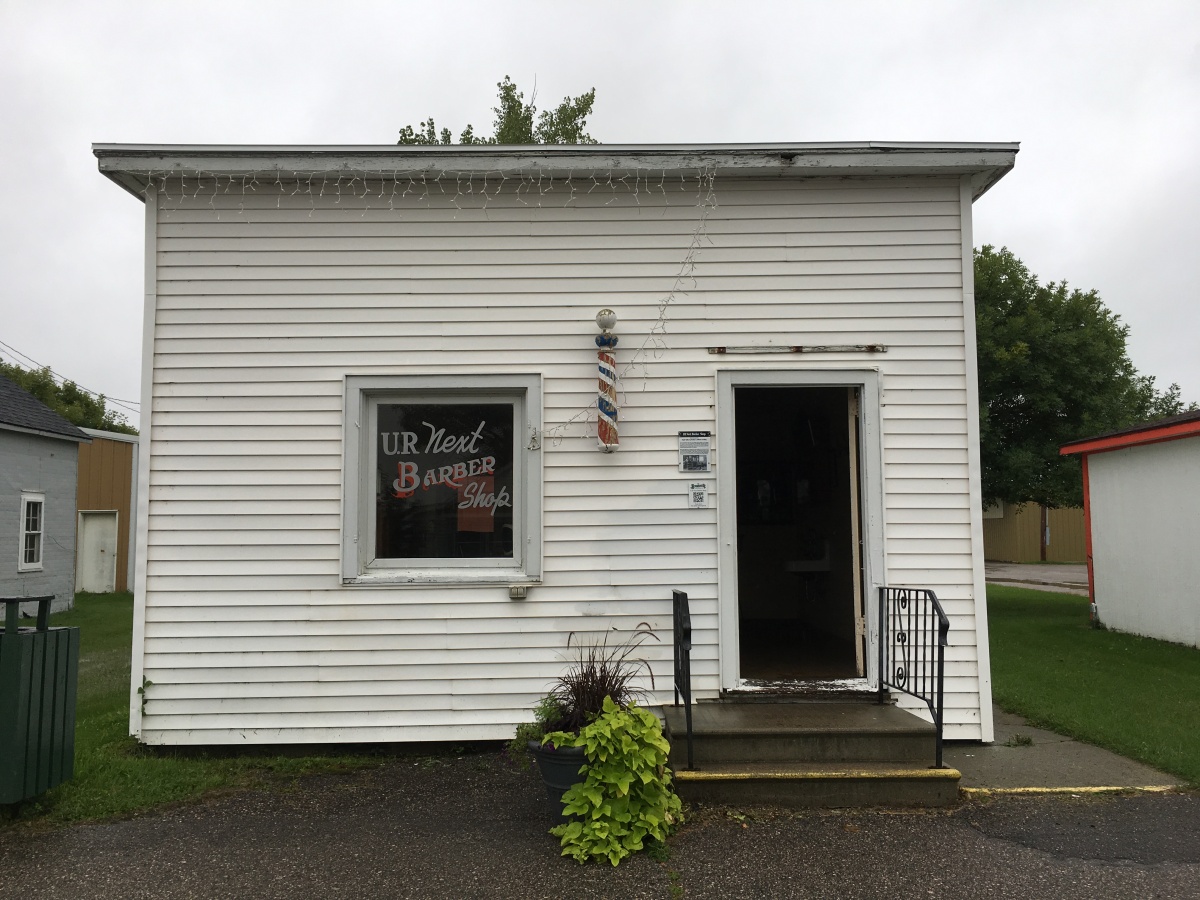
U R Next Barber Shop
In The Hunter Times, there were some war-related headlines. Originally from Hunter, ND, the newspaper flourished until the 1940s. Among the machinery on display here is a strip casting machine, hand-operated press, flatbed press, and linotype machine.
Fargo’s First House was very rustic. The first permanent house in the Fargo area was built by immigrants in 1869. It has also served as a jail, hotel, and home.
The Checkered Years Home is from a bonanza farm.
The Furnberg Store was built in the late 1800s near the train stop at Osgood, ND. The store provided settlers with necessary supplies and also served as a post office. The store closed in 1953 after nearly 75 years in business.
The South Pleasant Lutheran Church was built in 1890 and held services until it closed in 2013.
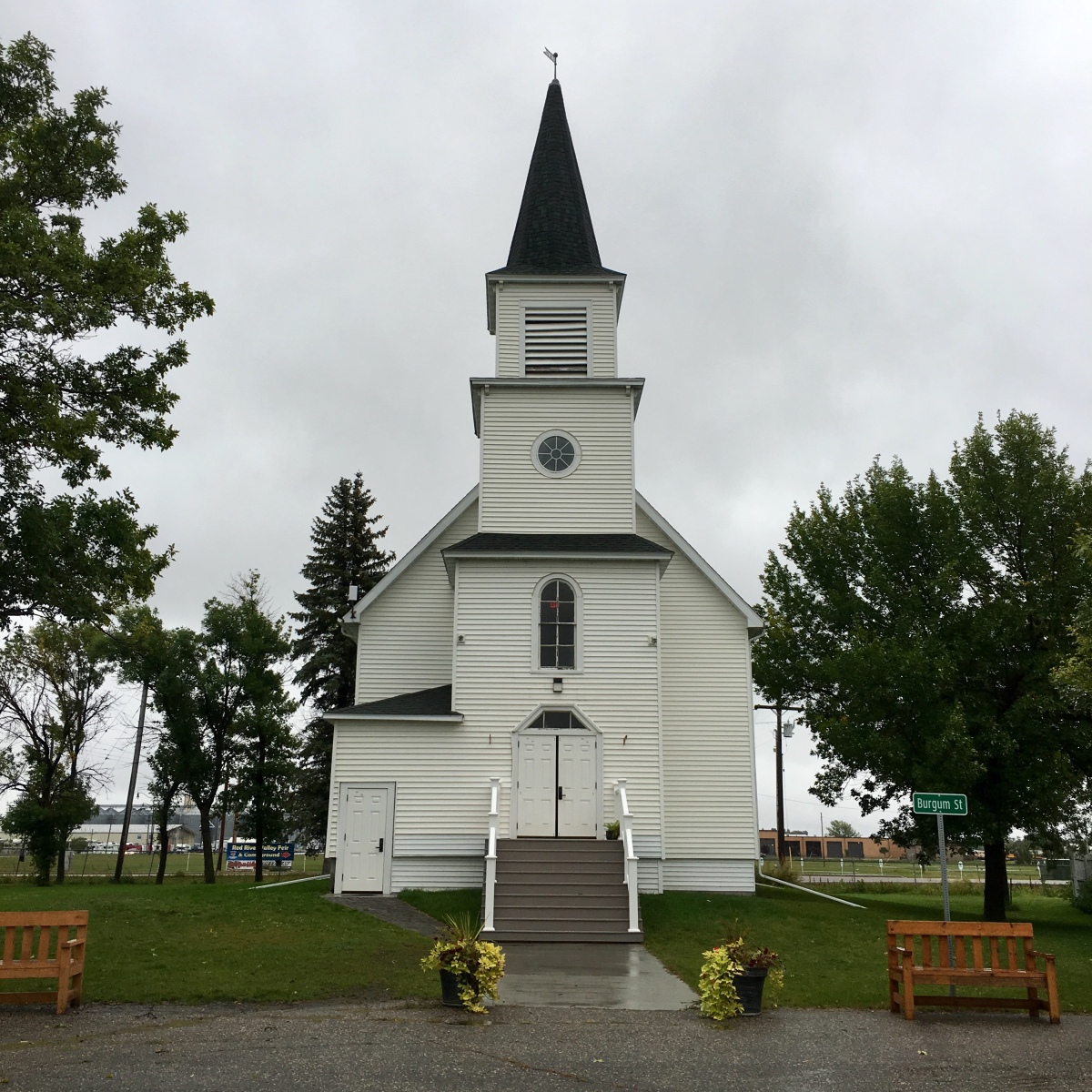
South Pleasant Church

South Pleasant Church
Habberstad Cabin was built by a group of Finnish settlers in 1874.
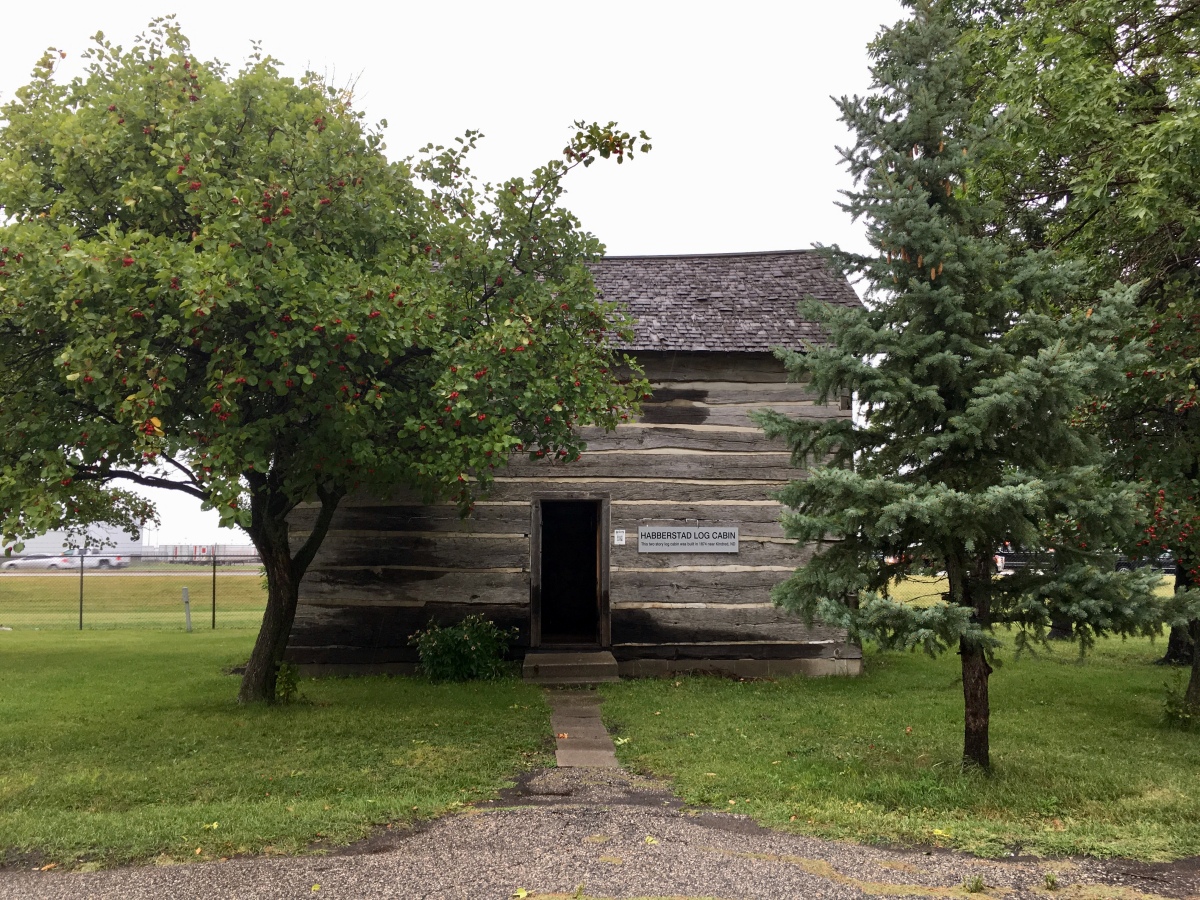
Habberstad Log Cabin
The Land Office Bank is a replica of a Cogswell, ND building. The land office was where hopeful new land seekers would file their plots and after proving up their land would receive titles to their property.
The Hagen House was built in 1897. Four generations lived here without electricity or indoor plumbing. A summer kitchen in located behind the house.

Hagen House
I stopped into the Arthur Town Hall (a movie house) and and old Coca-Cola machine. The town hall was built in the 1890s at a cost of $1,000. It held plays, meetings, graduations, and movies.
The Trangsrud House was built in 1882 in rural Kindred. All the furnishings are original to the Trangsrud family.
The Pioneer Fire Company was built by area firefighters as a replica of an 1890s station. It contains several hand pulled carts, one of the original horse drawn wagons of the Fargo Fire Department, and replicated living quarters upstairs.

Pioneer Fire Company
In the Horse Drawn Vehicle Building, I saw buggies, wagons, drays, hitches, grain binders, and a replica Wells Fargo stagecoach. I saw horse-drawn vehicles for U.S. Mail, Standard Oil Co., Acme Dairy, Oak Mound School District 78, and a horse-drawn hearse from a funeral home in Davenport, ND.
Melroe Tractor Building is named for Les Melroe, founder of Melroe Manufacturing which became Bobcat. It features many manufacturers including Cast, John Deere, and McCormick.
In the Moum Agriculture Museum were tractors, farm machinery, the world’s largest bulldozer, and the first Steiger tractors ever built.
All information from Bonanzaville comes from signs and a pamphlet distributed by the Cass County Historical Society.
It was pouring rain by the time I left and I was cold and soaked through. I was happy to check in at the Kelly Inn.
After I rested and dried off, I had dinner at Granite Point: Down Home Chicken and Biscuits: boneless chicken breast buttermilk-brined, hand breaded and fried crispy. Served with garlic mashed potatoes and a buttered biscuit smothered with house-made sausage gravy. I ate half and saved the rest for lunch the next day.
I also had an “Unseriously Good Beer”: Gold Fever – a Belgian strong ale (fruity, spicy and strong).
Every night while I was traveling, I talked to Mike by phone. My sister-in-law had just had a knee replacement and was staying overnight at Washington Hospital Center. Mike and our son went to visit her, and it sounded like they had a grand time.
Here is my journal page for this day.

journal spread from September 9, 2019
*Drove 171.1 miles. Steps: 8,523, or 3.61 miles*
*Monday, September 9, 2019*
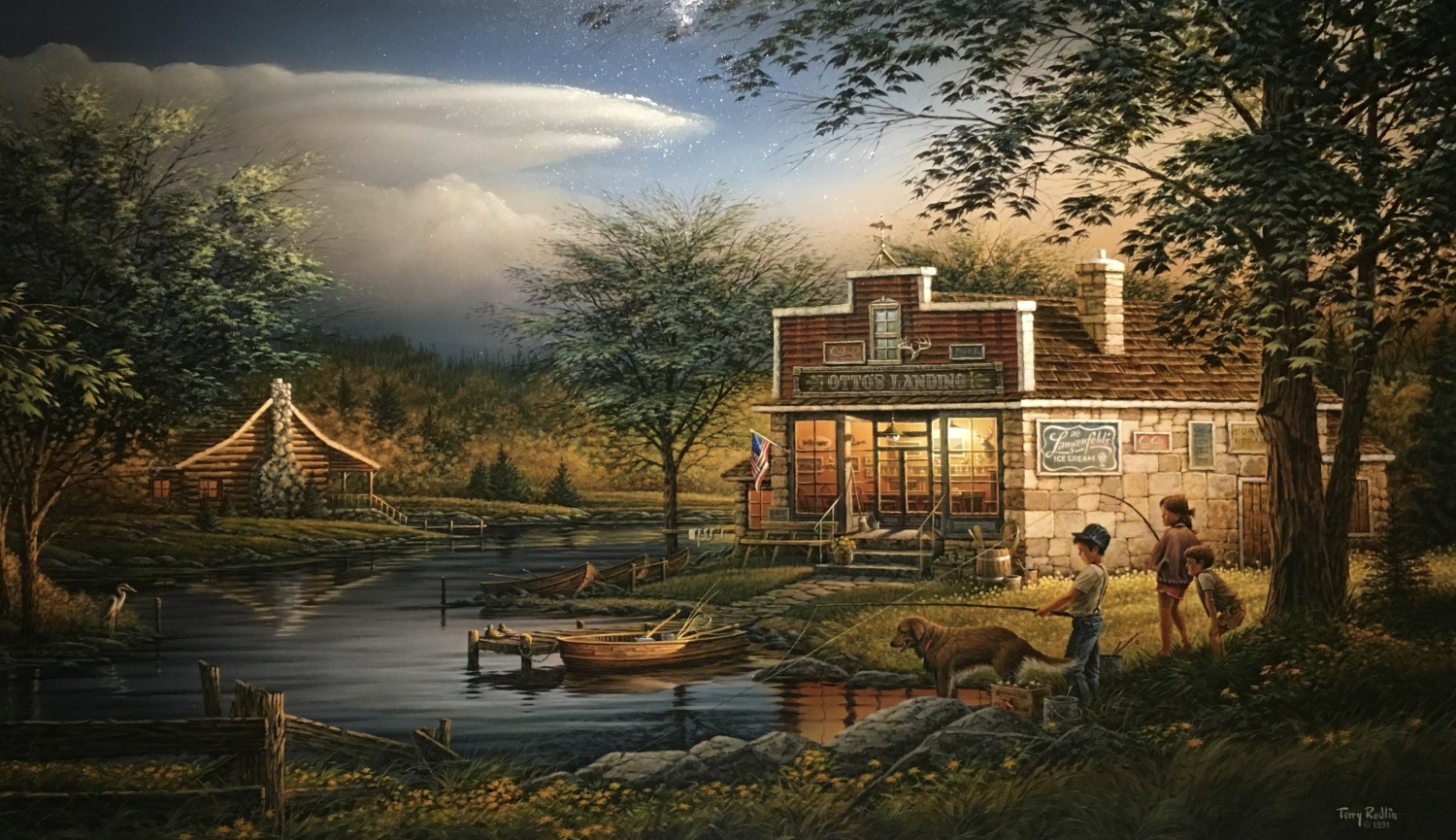



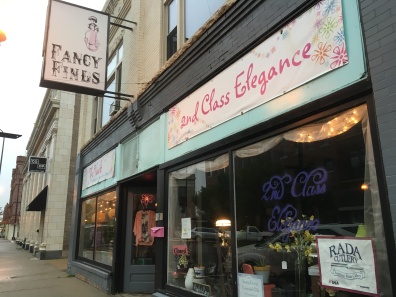


















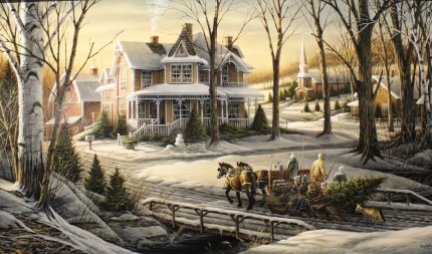





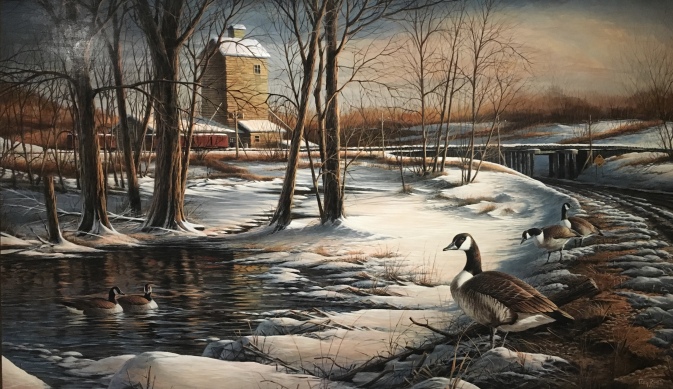





































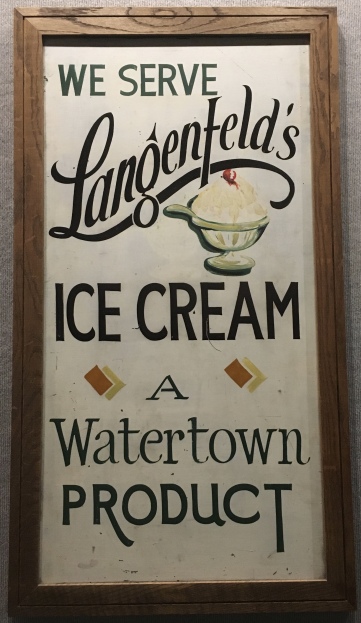






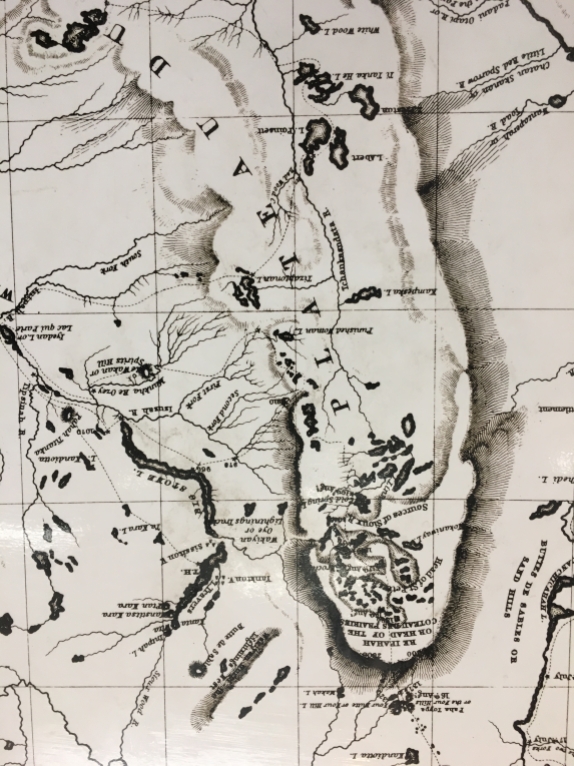



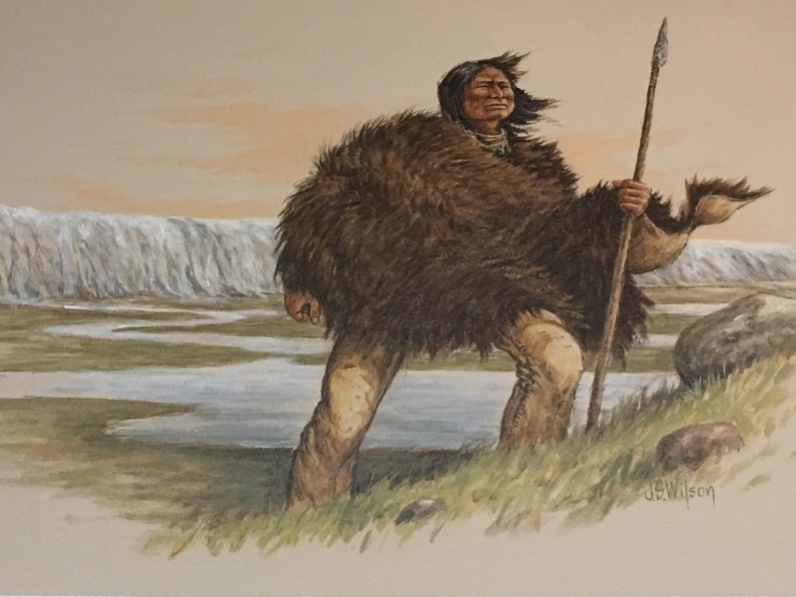



























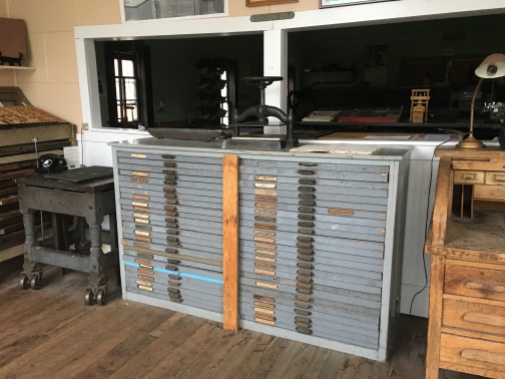
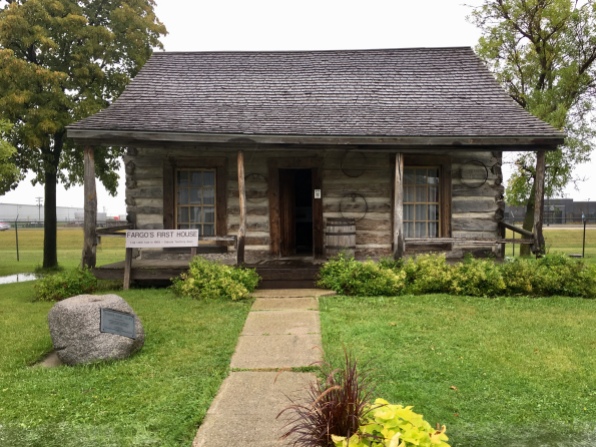

















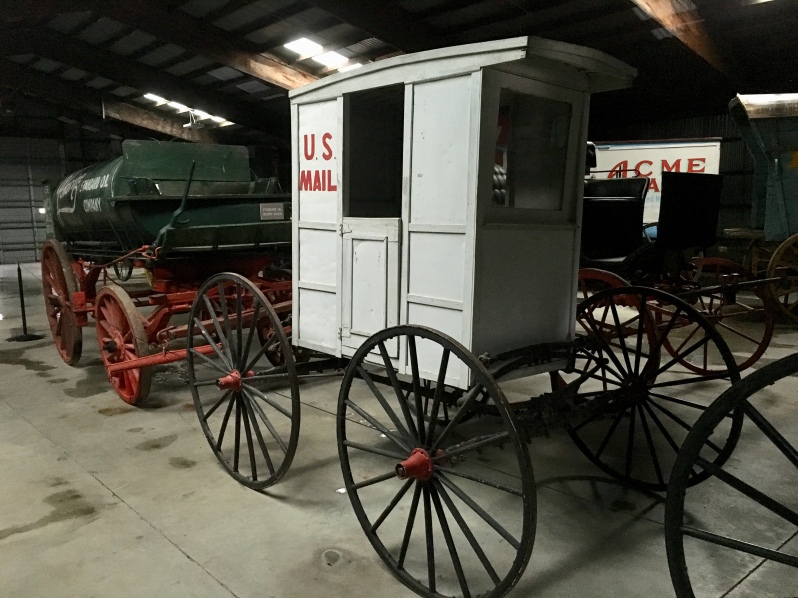











Some of Redlin’s paintings are really beautiful, almost lit from within. 🙂 🙂 I’d never heard of him, Cathy. Extraordinary how an event like that can shape a life.
LikeLike
Yes, Jo, I think they’re both beautiful yet a bit kitschy in that they remind me of those paintings on black velvet! But as I studied them, I found that he captured a certain nostalgic way of American life in the countryside, and especially on the prairie. The lighting in the paintings is amazing. It was sad that he lost a leg, but so wonderful that he went on to become successful and happy. 🙂
LikeLiked by 1 person
I can’t imagine how you packed all that into one day!
LikeLike
Haha! I’m amazed myself sometimes. Mike is always floored by how much I do when I travel. 🙂
LikeLiked by 1 person
Those shops do look enticing. It might have been a good thing they weren’t open. 🙂 Aren’t those paintings gorgeous.
LikeLike
I’m always enticed by pretty storefronts, Carol. And yes, I thought the paintings were beautiful. 🙂
LikeLike